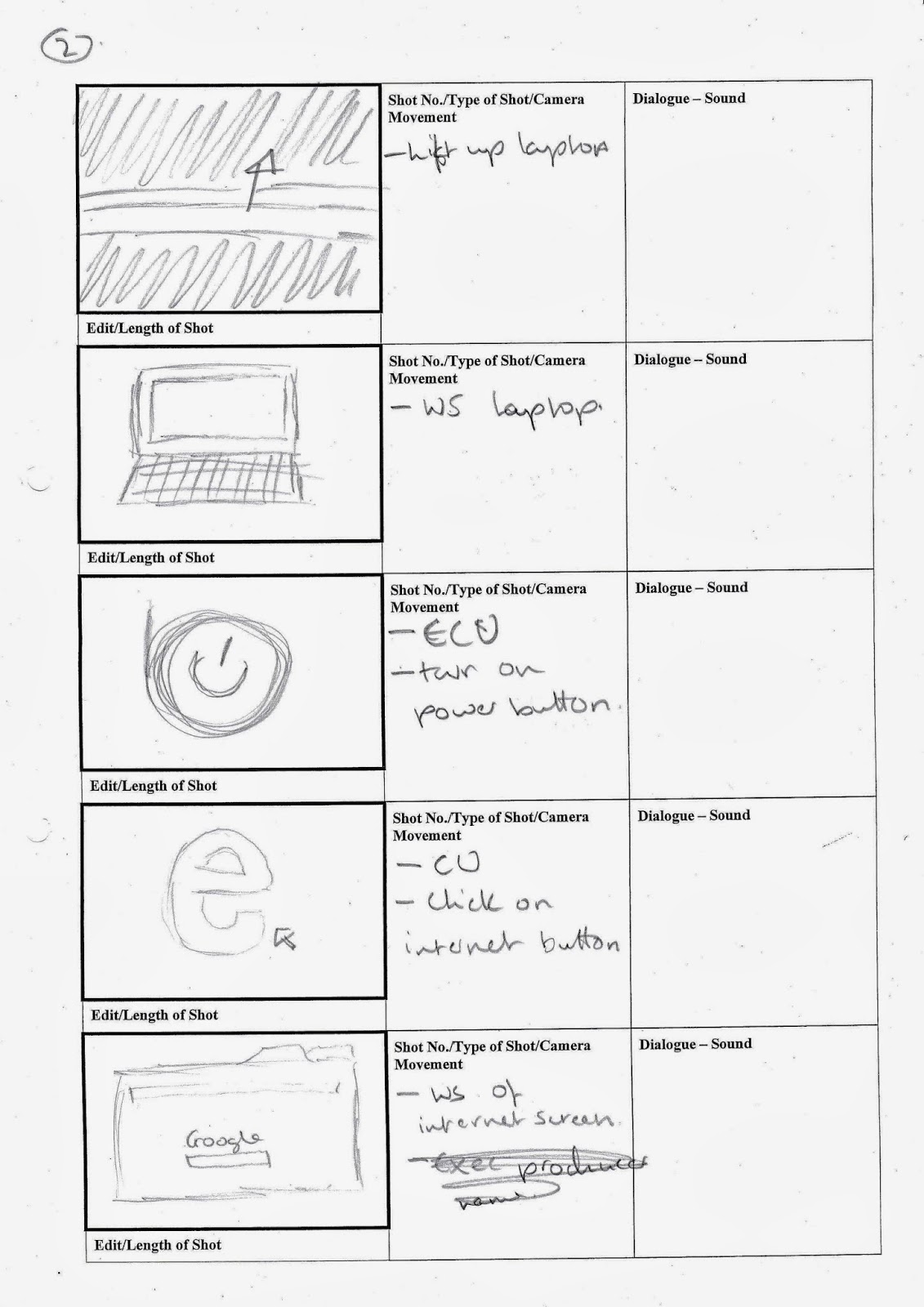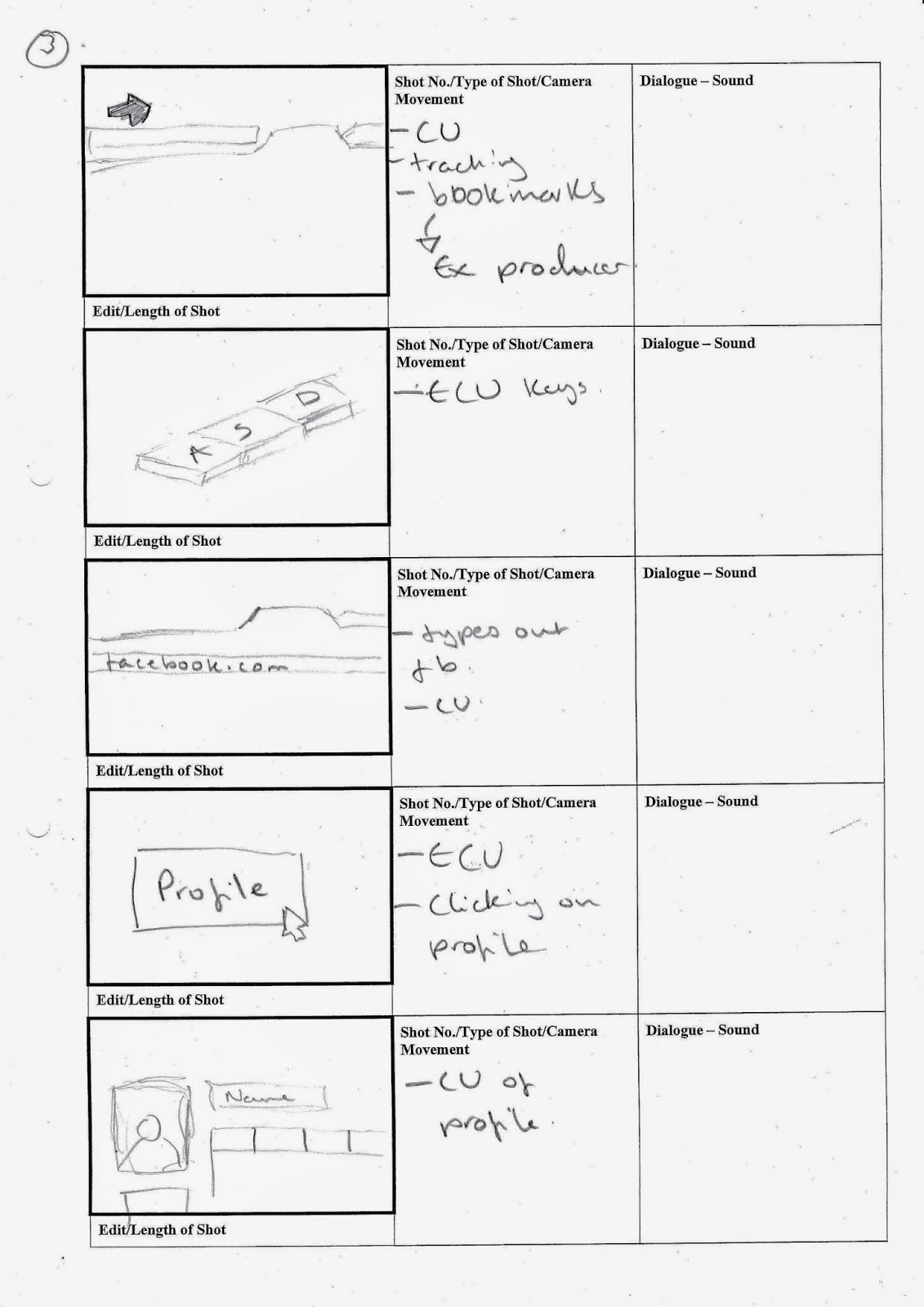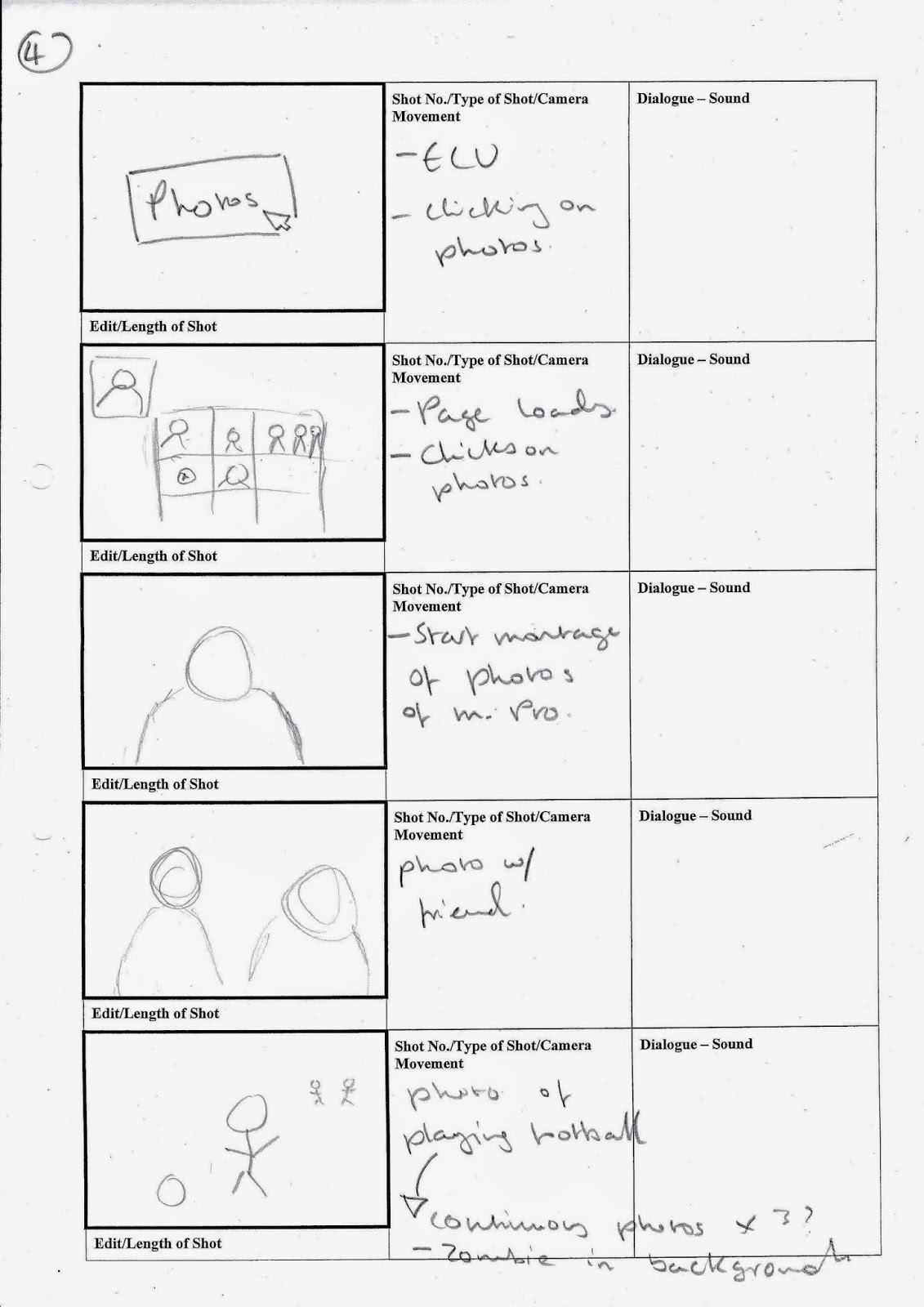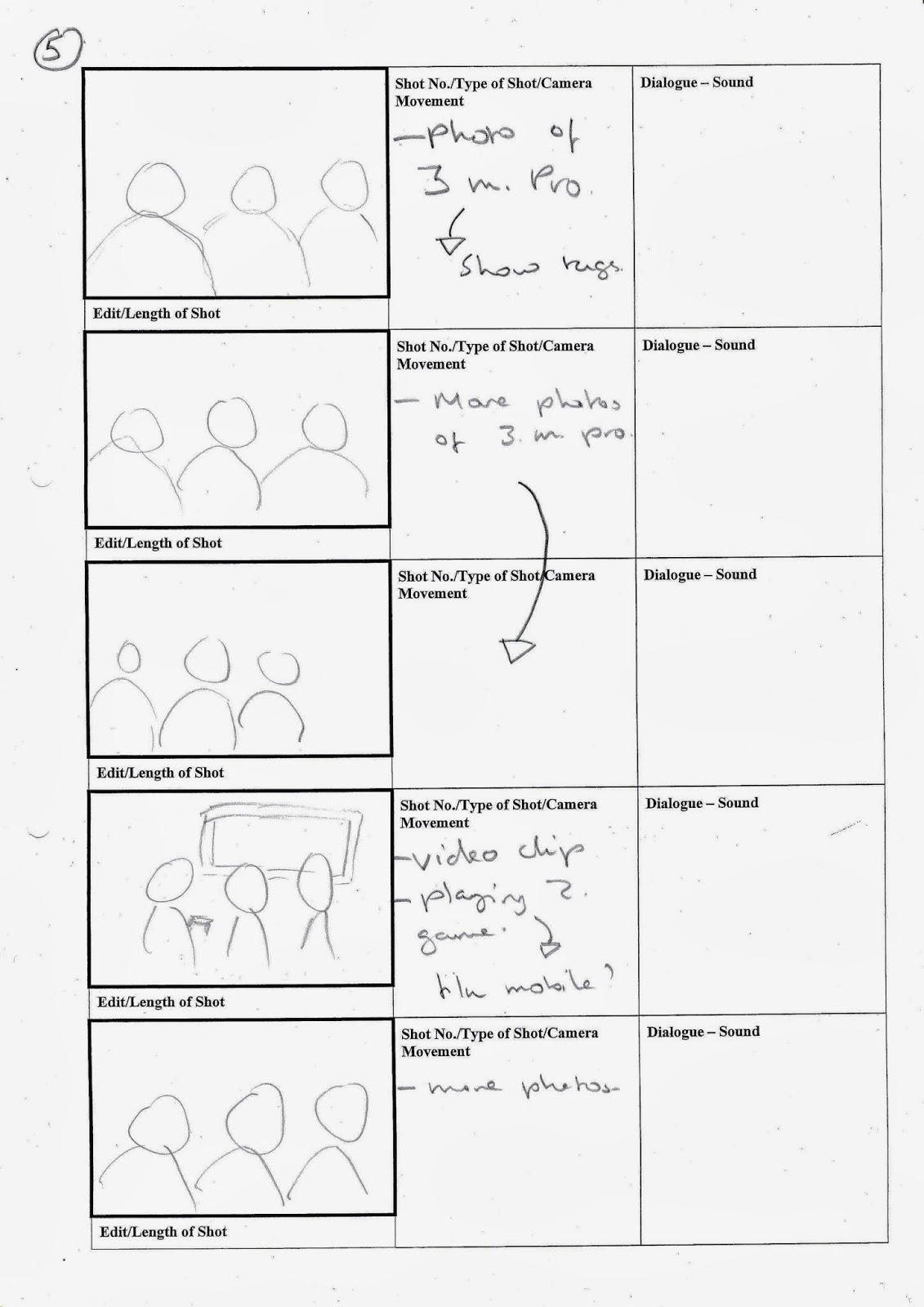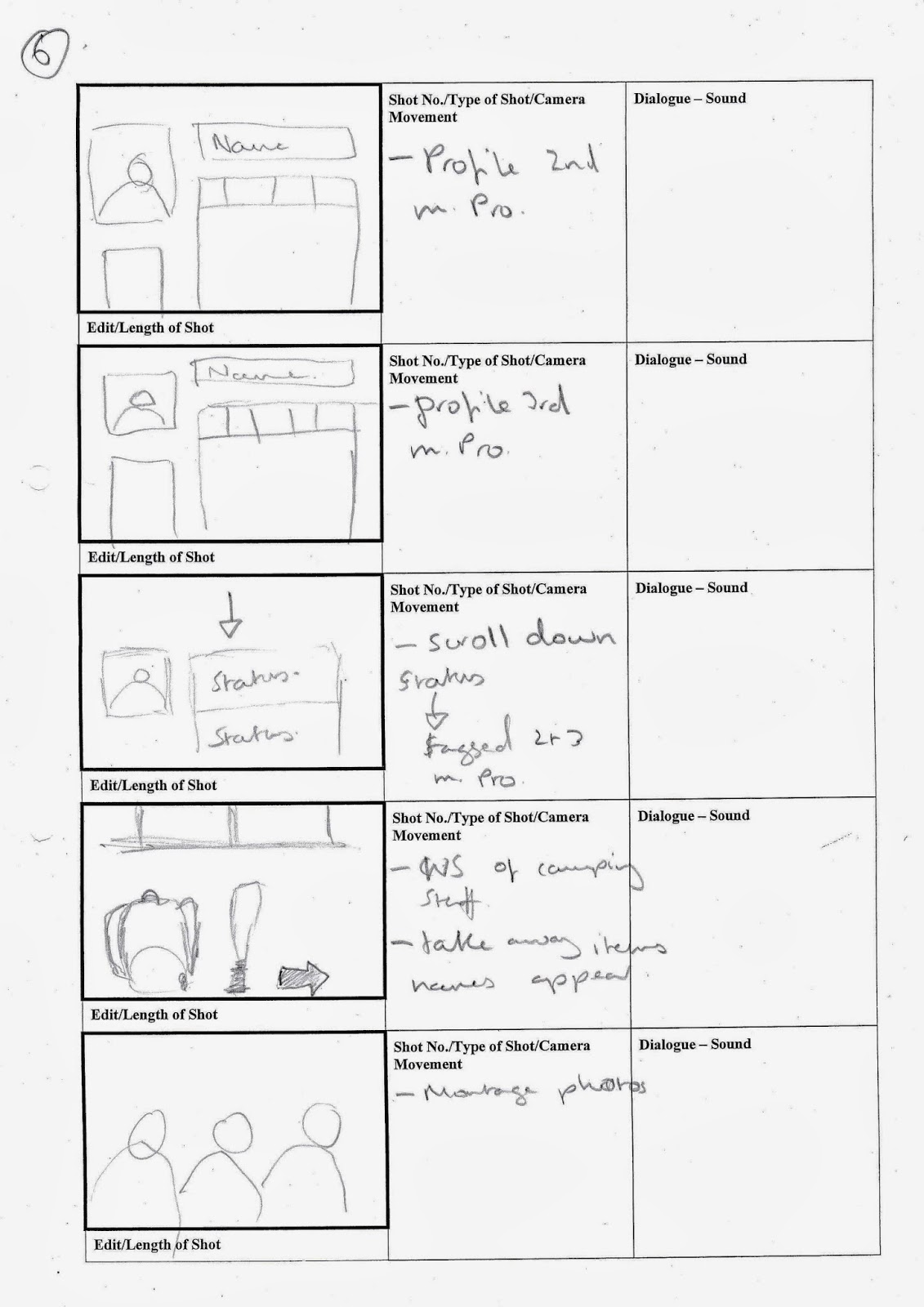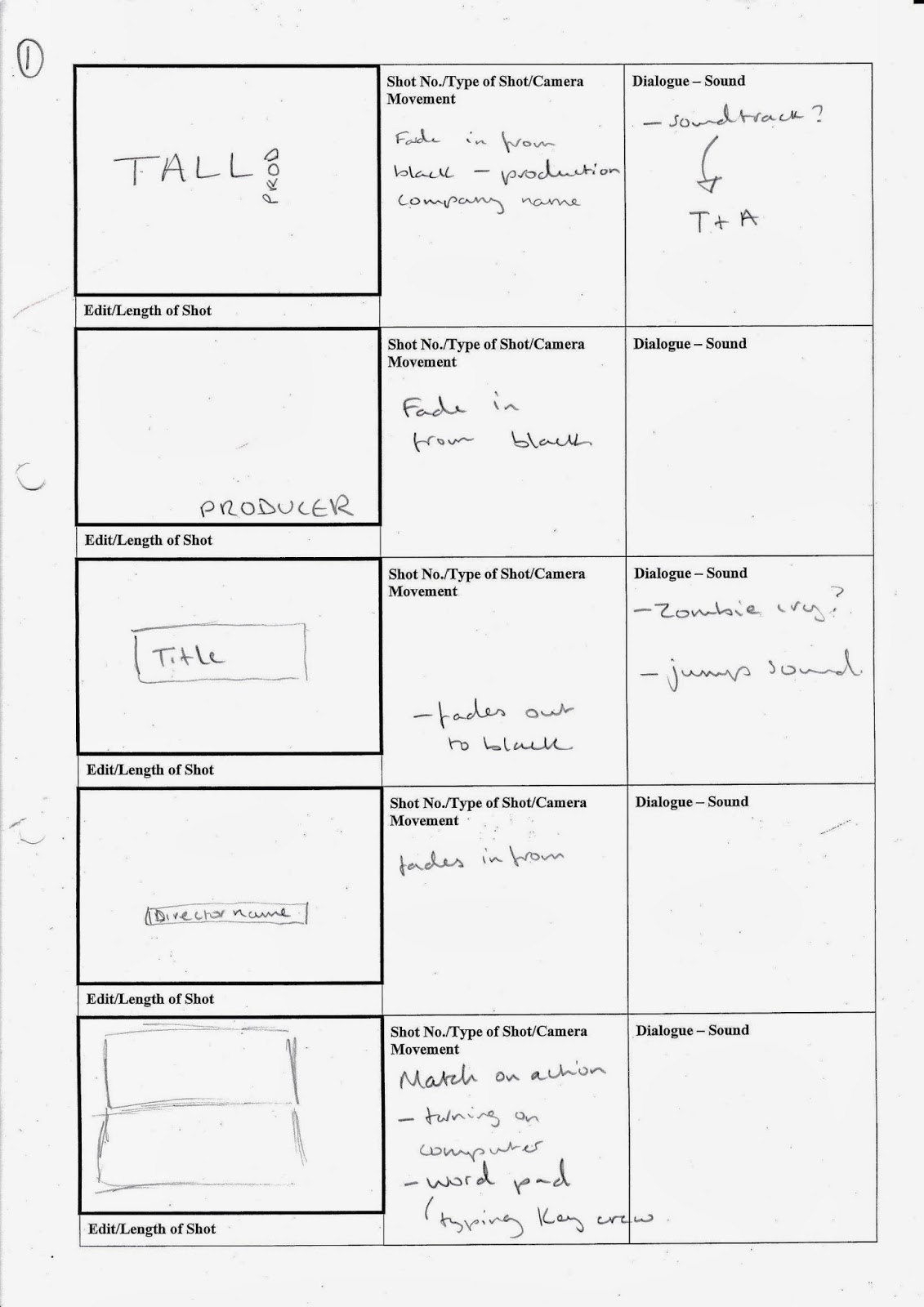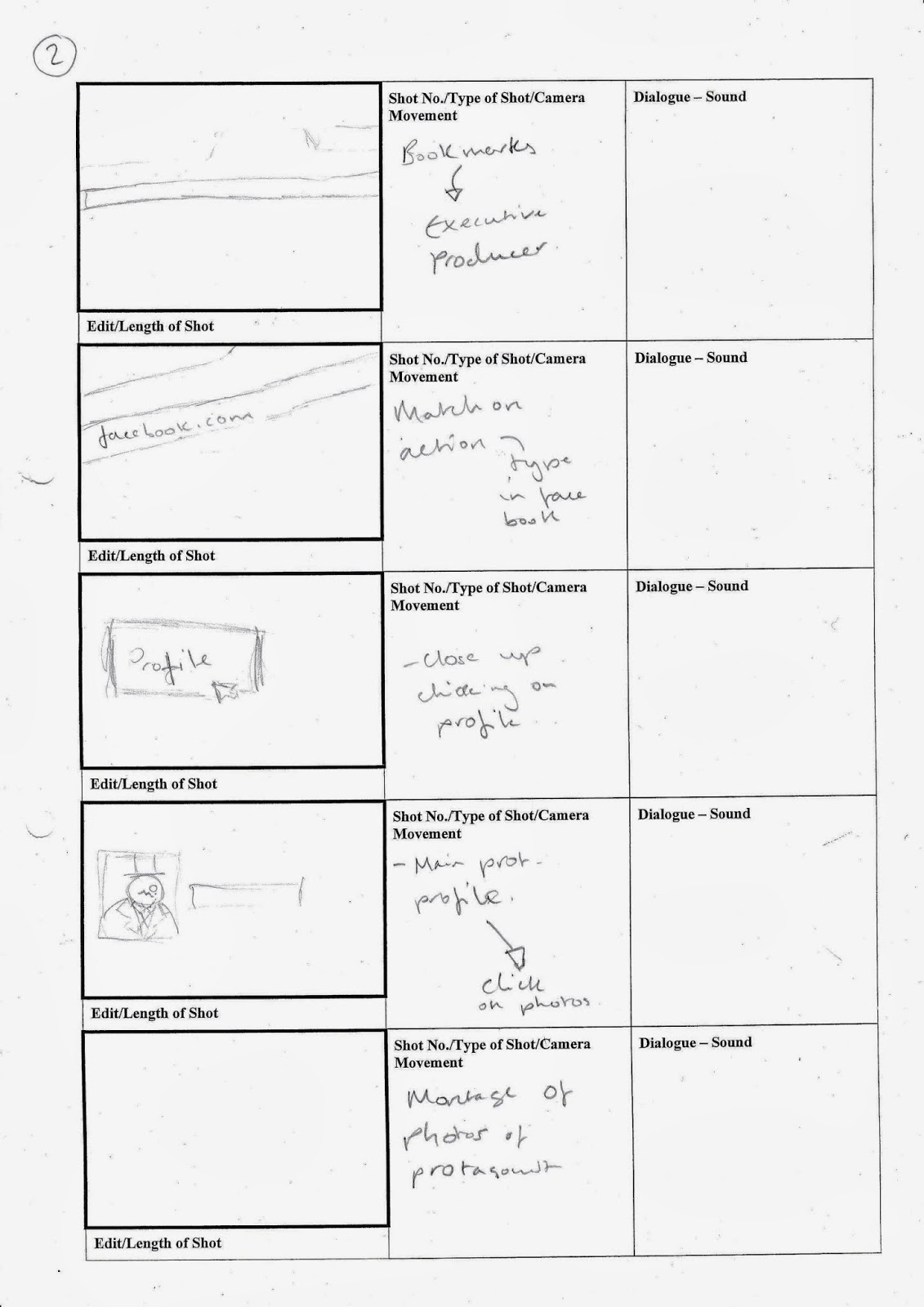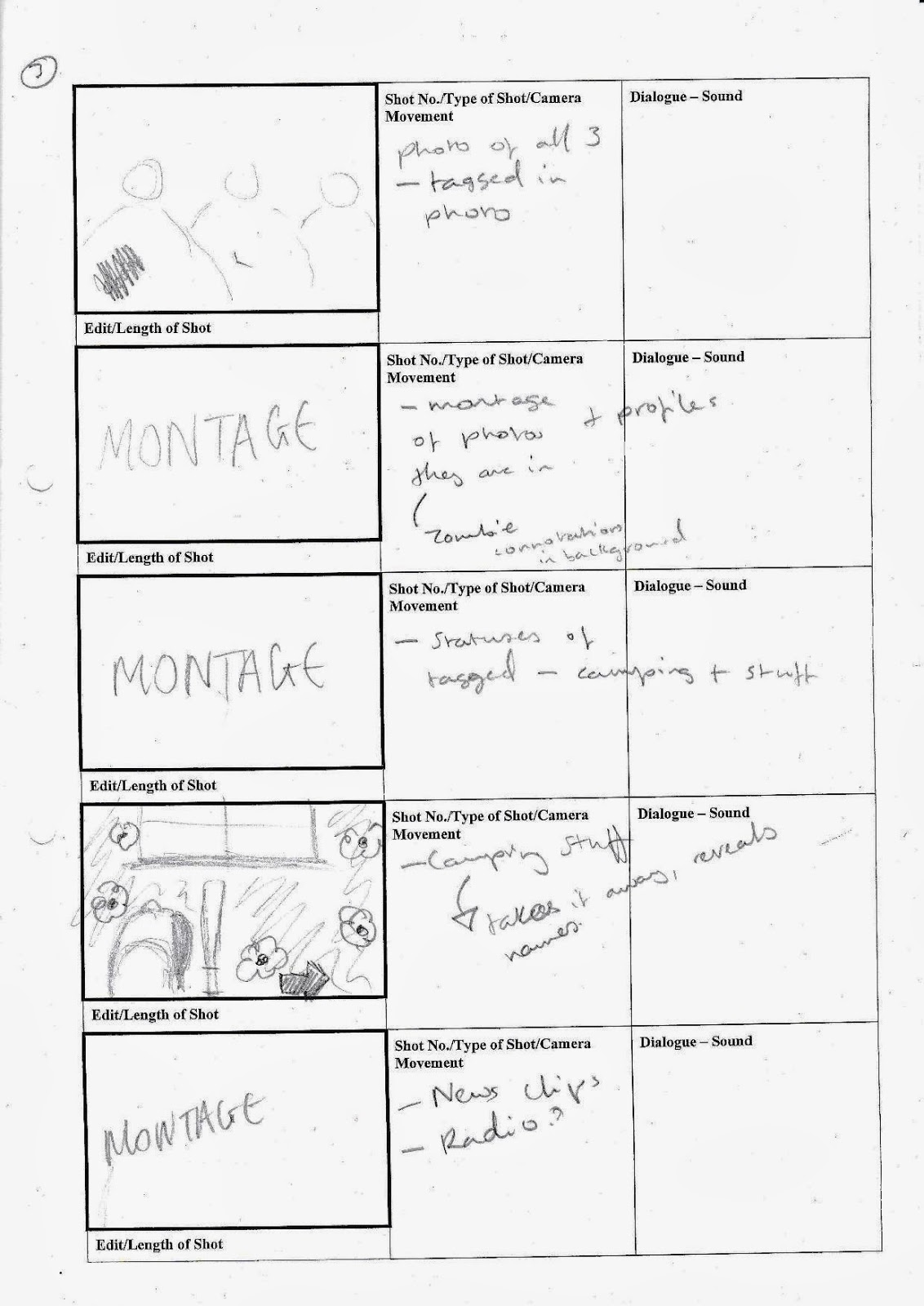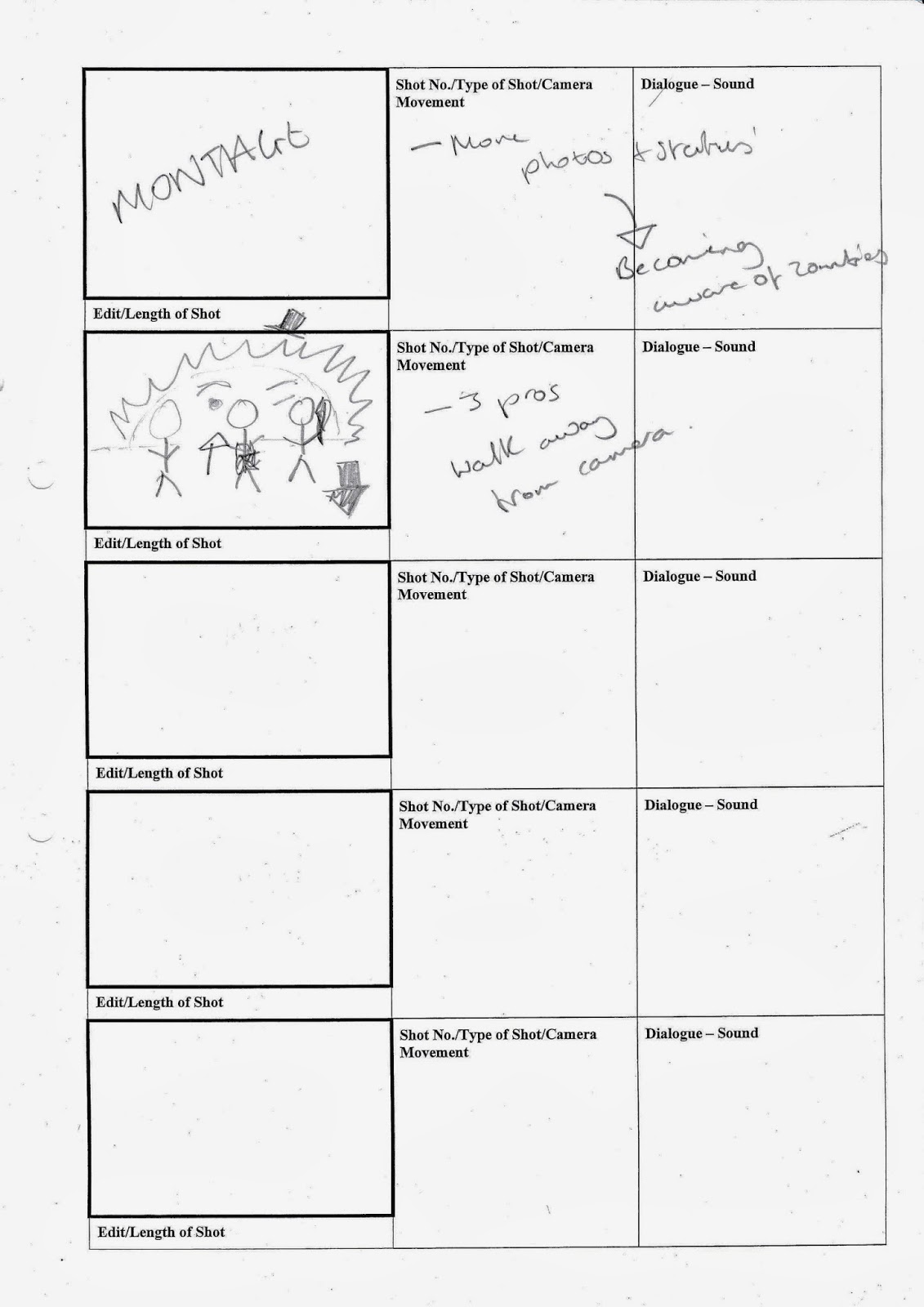Friday, 31 January 2014
Initial Storyboards
This is the second draft of our storyboards for our title sequence that we completed in Emily's class. We also spoke of preproduction plans and creating a schedule for which thing should be completed by and what we should be doing during the holidays filming wise.
Group Research
During one of our groups breaks and free lessons, we started to begin thinking about what sounds we would use within our title seqeunce.
These are some uncopyrighted tracks we are considering to use for the soundtrack. We are thinking about layering some of the tracks over each other, or even recording noises and making a song from that (showing the humour element in our film).
This is the sort of make up we want our zombie's to look like, maybe not as much detail like the boils and the veins, but definitely the dark eyes and emphasis on the chest.
We are thinking about use zombie screeches/cries during our title sequence. This is what we want our zombies to sound like, however we will record our own zombie noises.
These are some uncopyrighted tracks we are considering to use for the soundtrack. We are thinking about layering some of the tracks over each other, or even recording noises and making a song from that (showing the humour element in our film).
This is the sort of make up we want our zombie's to look like, maybe not as much detail like the boils and the veins, but definitely the dark eyes and emphasis on the chest.
We are thinking about use zombie screeches/cries during our title sequence. This is what we want our zombies to sound like, however we will record our own zombie noises.
Group Feedback
At the beginning of the lesson, we sat down with Leanne, spoke of our film idea and got feedback on what to do, also Leanne looked at our blogs and gave us feedback on how to improve our blogs.
Group Feedback:
-Research into background things (look up zombie make up, etc)
-Storyboards
- Sort out labels on the posts
-Create a slideshare account for any future powerpoint presentions/documents
Blog Feedback:
-Add label gadget to blog- Sort out labels on the posts
-Create a slideshare account for any future powerpoint presentions/documents
Monday, 27 January 2014
Questionnaire
In our groups, we came up with a questionnaire to give to people about our film, this is what we got:
Summary:
Overall, our audience expect for our film to be a dark comedy/horror/action. They expect to see death, violence and zombies. They expect to see zombies, killing, news footage and an introduction to the film within the title sequence. They expect to hear screams, zombie noises, gunfire and slow deep music in the title sequence. They expect to see low key / dark lighting. They think the protagonist should be aged from high teenage years to low 20 year olds. There is a 3 - 2 on the type of font the title should be (we should play around with the title more with these fonts and ask again). The audience would typically see the film late at night and at the weekend, typically children aren't around at night and this would put the audience in the mindset to be scared, getting the audience ready for the diegesis of the film. Typically, the audience expect to see a low budget.
Summary:
Overall, our audience expect for our film to be a dark comedy/horror/action. They expect to see death, violence and zombies. They expect to see zombies, killing, news footage and an introduction to the film within the title sequence. They expect to hear screams, zombie noises, gunfire and slow deep music in the title sequence. They expect to see low key / dark lighting. They think the protagonist should be aged from high teenage years to low 20 year olds. There is a 3 - 2 on the type of font the title should be (we should play around with the title more with these fonts and ask again). The audience would typically see the film late at night and at the weekend, typically children aren't around at night and this would put the audience in the mindset to be scared, getting the audience ready for the diegesis of the film. Typically, the audience expect to see a low budget.
Need to:
Play around with the fonts
Question the same audience about the titles
Prelim/initial storyboards for the film
Sunday, 26 January 2014
Enigma Code
Roland Barthes Enigma Code
Enigma - illusive - secret
A text portrays mystery to draw an audience in to pose questions and as such become intrigued in the piece.
For instance, a murder mystery will often not reveal the identity of the killer until the end of the story which poses the question,'who is the murderer?'
Narrative/enigma codes
Categorised as:
In our title sequence, we plan to use enigma codes. We will use the Hermeneutic Code; we will show a creature in the background of a photo or video, the character will comment on this but it will not be explained within the title sequence. The use of the Hermeneutic Code will lead to the use of the Proairetic Code; the audience will guess what the creature is and how it will attack them. The Cultural Code may also be used as due to the amount of media the audience have already comsumed based on the idea off zombies will effect the audiences cultural knowledge.
Enigma - illusive - secret
A text portrays mystery to draw an audience in to pose questions and as such become intrigued in the piece.
For instance, a murder mystery will often not reveal the identity of the killer until the end of the story which poses the question,'who is the murderer?'
Narrative/enigma codes
Categorised as:
- Hermeneutic Code - Voice of Truth. : Element in a story not explained and therefore exists as an enigma for the reader, raising questions
- Proairetic Code - Voice of Empirics : Tension built up leaving the audience guessing what will happen next
- Semantic Code - Voice of Person : Any element in text suggests meaning by way of connotation which the story suggests
- Symbolic Code - Voice of Symbol : Wider level of semantic code, organises semantic meanings into broader and deeper sets of meaning. New meaning arises out of opposing and conflict ideas
- Cultural Code - Voice of Knowledge : Looks at the audiences wider cultural knowledge, morality and ideology
In our title sequence, we plan to use enigma codes. We will use the Hermeneutic Code; we will show a creature in the background of a photo or video, the character will comment on this but it will not be explained within the title sequence. The use of the Hermeneutic Code will lead to the use of the Proairetic Code; the audience will guess what the creature is and how it will attack them. The Cultural Code may also be used as due to the amount of media the audience have already comsumed based on the idea off zombies will effect the audiences cultural knowledge.
Subscribe to:
Comments (Atom)

